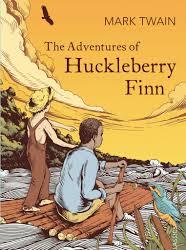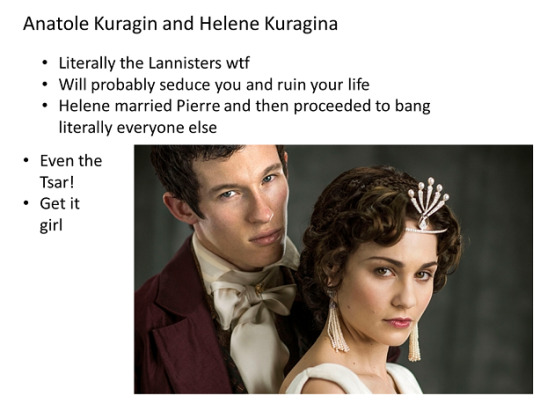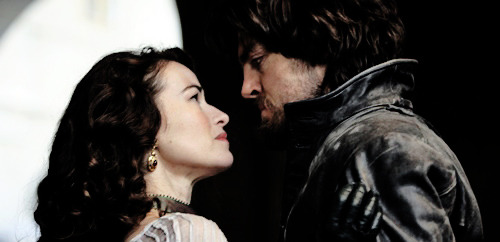My take on GoT and ASoIaF (Note: This blog contains spoilers)
Don't wanna be here? Send us removal request.
Note
Castle wall... wall of ice... courtesy is a lady's armor ... the wall is mine... Hum, what did Tyrion say to Jon? Wear your shame like armor? Wear your name like armor? Does Jon wear a wall like armor? A wall of ice maybe? 🙄 Random late night thoughts...
Interesting thoughts 😊
78 notes
·
View notes
Note
About Arya being Azor Ahai, in ACoK Arya IV she goes from a burning barn (smoke) into tunnel where she cries (salt). It's as if she's reborn. It actually changes her life as she saved 3 men which connects her to Jaqen who connects her to the Faceless Men and Braavos.
Hi there, pretty late reply. There are many hints as to her being reborn in salt and smoke. 😊 Not entirely sure about the burning barn part.
2 notes
·
View notes
Text
Huckleberry Finn and the Missing Prince
I read the Adventures of Huckleberry Finn when I was a kid, and I think I liked this book more than the one on Tom Sawyer. I chuckled reading this theory for the first time, it brought back memories of the book.

This post was originally posted on the reddit forums by /u/wren42. I scour the forums for posts like these, that show the literary or historical significance of plotlines, characters. Here it is...
Introduction
A while back there was a post about our favorite subtle allusions in ASOIAF, and I mentioned Huck Finn. A few posters were curious to see a longer writeup of the parallels -- so here it is. =)
The chapters detailing Aegon’s travels on the Rhoyne have often been noted by astute readers as containing references to another famous river trip - Mark Twain’s “The Adventures of Huckleberry Finn.”
There are obvious parallels in narrative and the imagery GRRM chooses: Young GrifFinn wears an iconic straw hat and travels down a river on a barge having adventures.
If these similarities weren’t blatant enough, GRRM drops this bit in ADWD:
The Upper Rhoyne was full of snags and Sawyers, any one of which could rip out the Shy Maid's hull. Griff did not want to hear it. What he wanted was Volantis.
A sawyer is an unusual and archaic word -- “a fallen tree stuck on the bottom of a river, where it constitutes a danger to boating” -- it’s also of course the name of Huck Finn’s partner in crime Tom Sawyer.
Most people assume the connections stop here, and that these cheeky winks are just a cute cosmetic reference, like the Wheel of Time or Harry Potter easter eggs.
However, when you dig deeper into Huck Finn, you can find connections to a popular tinfoil subplot:
**I believe Young Griff’s similarity to Huck Finn is actually an intentional subtextual clue to his Blackfyre lineage. **
The story of Huck Finn contains thematic and narrative elements that GRRM may have purposefully drawn from in crafting the Blackfyre subplot. George is known to do this - he draws heavily from English and French history as well has various mythologies both for world-building inspiration and specific plot points. I believe that GRRM included the Huck Finn references because he was amused by the cleverness of the thematic parallels with the Blackfyre story.
"The Adventures of Huckleberry Finn" isn’t just the story of a kid floating down a river -- it features mistaken identities, blood feuds between two aristocratic houses and the extermination of the male bloodline of one, and a pair of con artists who falsely pretend to be royalty "the duke and the king" and put on a mummers show to scam money. These themes are reflected as in a dark mirror in GRRMs secret fAegon Blackfyre subplot.
The False Nephew
The core conceit of the blackfyre conspiracy theory is that fAegon is not the long lost son of Rhaegar, but in fact a descendant of the bastard Blackfyre line, found by Varys or the Golden Company(depending who you ask), and put forward as a pretender in order to hijack the throne.
So how is Finn similar to fAegon?
Both Young Griff and Finn falsely pretend to be the Nephew of an influential family to cheat them.
Huck Finn’s plot is rife with cases of mistaken identity, disguises, con-men, and pretenders. However the most notable is his identity swap with the infamous Tom Sawyer. Near the climax of the story Finn arrives in a distant town and insinuates himself into a wealthy family by pretending to be the Nephew of Aunt Sally and Uncle Silas Phelps. He uses this position to help effect the escape of his friend Jim from slavery.
Why does this matter?
The true Aegon would be Daenerys’ nephew -- but Young GrifFinn isn’t truly her nephew, he’s a fake. The mistaken identity in Huck Finn is paralleled in fAegon’s false claim and attempt to steal the throne from Danny.
And this isn’t the only such clue -- Huck Finn features other cons and pretenders, even some who claim, laughably, to be nobility.
Noble Pretenders and Stolen Inheritance
In Huck Finn two con artists “The Duke and the King” pretend to be royalty and perform various stunts to rob people.
They introduce themselves as the long-lost heirs of noble houses, one to the Duke of Bridgewater, the other as the Lost Dauphin, the King of France Louis XVII.
Louis XVII’s actual history is of keen interest here, and with it we start to see how deep the rabbit hole goes.
History of the Lost Dauphin
During the French Revolution, where the long standing dynastic monarchy was overthrown, Louis XVI was imprisoned and executed. Louis XVII was actually the second son of the king, but his elder brother had died leaving him as heir apparent.
Little Louis-Charles was technically recognized as King by the nobles but never ruled and was kept imprisoned by the new Republic government. This is where the conspiracy theories start to spring up.
Immediately after his father’s death, plots were hatched to free Louis-Charles from confinement, but these came to nothing at the time, and eventually he died of illness in captivity under mysterious circumstances -- it being suspected that his doctor was murdered by poison. However, popular theories abounded in the day and for many years afterward of conspiracies to smuggle the child out of confinement in the Temple tower. They proposed that the autopsy and burial records had been falsified, and that in fact the boy had lived and been spirited away.
Rumours abound and when the monarchy was restored some 20 years later, hundreds of claimants pretending to be the “Lost Dauphin” came forward to attempt to take the throne.
GRRM The Histrogrifter
This is perhaps one of the most famous stories of a lost prince in European history, and GRRM would certainly have studied it in preparing his narrative around the Targaryen Restoration. It’s well established that he based the history of westeros on English and French history and this plot could not have been overlooked.
Thus, the appearance of a Dauphin pretender in Huck Finn can be taken as something GRRM would have noted, given he’s included references to Huck in fAegon’s chapters. Here is an obviously false claimant pretending to be the long-lost heir of a royal bloodline whose throne is about to be restored - a juicy intrigue to parallel in his own story!
And indeed, in fAegon we have an heir presumed dead after a revolution, only to supposedly have been spirited away by Varys during the sack of King’s Landing, and appearing later as a false claimant when the original line is restored. The similarity to Louis Charles is stunning.
Scammers, Swindlers, and Mummers
The antics of the “Duke and the King” provide the basis for other allusions in ASOIAF as well.
Later in the story the group arrives in the town of the primary target -- a recently deceased nobleman who has left a large inheritance to his daughters. The “Duke” pretends to be the missing heir of this nobleman to swindle the Heiresses of their fortune -- again paralleled by fAegon’s royal pretensions attempting to steal the Iron Throne from Daenerys. But of course, the Duke, like fAegon, is a fraud.
The two con-men engage in a variety of schemes, one of which involves putting on a play -- or mummer’s farce, if you will -- entitled “The Royal Nonesuch” -- ie a play about false royalty. The play is a bawdy flop and complete ripoff of the town’s populace, and they eventually have to flee for their lives or risk being hung.
These themes are also hinted at in the Duke and King’s theatrical fumbles -- in addition to the “Royal Nonesesuch” the pair practices scenes from Romeo and Juliet, Richard III, and Macbeth, the former of course being the archetypal tale of feuding families (which we will revisit shortly), while the later two are again stories about wars to usurp a throne.
These theatrical elements have been worked into AOSIAF via references to fAegon as the “Mummer’s Dragon”, and parallels in his story to those of Richard and Macbeth. It has been theorized that, just as the townspeople turn on the Duke and Dauphin when they learn the truth, the people of Westeros will turn on fAegon when his false identity is revealed.
Family Feud and the Extermination of a Male Bloodline
So we’ve established the falseness of fAegon’s claim, but how do we get to the Blackfyres, specifically?
The answer comes from another conflict Huck stumbles upon during his adventures.
The Blackfyres were a branch house of the Targaryen dynasty, started from a bastard line. After the wars that settled the legitimacy of their claim, they retreated into the east, and ultimately the male bloodline was believed to have been wiped out. Did GRRM draw inspiration from Huck Finn for this part of the story as well?
Huck Finn’s parallel to the Targaryens and Blackfyres comes in the form of the conflict between the Shephersons and Grangerfords. These two bitter rival families are engaged in a 30 year blood feud, and Huck quickly becomes entangled in their war. Notably, the Grangerfords have a son Huck’s age who he befriends, and is then shocked to see gunned down in a firefight. Like the Blackfyres, the males of the Grangerford family are wiped out, ending the feud. This section can also be seen as an additional reference to Romeo and Juliet, as the final confrontation is kicked off by a forbidden tryst between children from opposing families.
If GRRM is drawing on Huck as a model for fAegon, then this conflict should play a prominent role in his story. fAegon should be not just a royal pretender, but a pretender tangled up in a long standing blood feud between two aristocratic families -- the Blackfyres and Targaryens.
One other subtle hint in Huck Finn supports the idea that fAegon is from a bastard royal line.
During their elaborate plot to break Jim out of captivity, Huck and Tom form a secret nation, complete with a royal coat-of-arms. Among the many superfluous and conflicting components of the crest, Tom insists they include a "bar sinister" -- the mark of a bastard line.
Finn and the Future
So we’ve established a strong connection between Huck Finn’s narrative and the Blackfyre subplot in ASOIAF -- but what might these parallels say about the future of fAegon’s story?
At least two plotlines from Huck Finn appear to be relevant here.
The ending of Huck Finn centers on the plot to free Jim from slavery out from under Tom’s Aunt Sally (which, you recall, parallels Danny as fAegons ‘aunt’). Tom hatches an absurdly complicated plan based on his ideas from romantic adventure stories.
This romanticism is reflected in Young Griff’s naivete and impulsiveness, traits that will likely lead to his downfall. In wanting to live out his romanticized vision of a great Conquering King, fAegon will be led to make unrealistic and foolish decisions. fAegon’s ultimate fate will likely be failure and defeat, brought on by his own naivete. Like Tom and Huck, he will act based on how he imagines a romanticized story would go, rather than on the practicalities of the situation, and in the end will be betrayed by the cold hard reality.
The second portion of Huck Finn that may become relevant is the fate of the Duke and King when their frauds are discovered. In the case of the “Royal Nonesuch”, they are run out of town at risk to their lives when the people discover they’ve been swindled.
It’s quite possible that fAegon’s claim will be delegitimized in some way, and the people of Westeros will turn against him. Where they first hailed him as a hero, once his true identity is discovered they will resent being duped and rise up against his claim.
How might this happen?
As a final spurious bit of tinfoil- in attempting to identify the true identity of the Duke after trying to steal the girls’ inheritance, the town is forced to exhume the dead brother’s body for evidence. While we can’t say for certain this detail would have any bearing on GRRM’s plot, it could perhaps be read as a hint about the identity of some trueborn heir in a certain crypt…
Were several claimants to all argue for their legitimacy, it would be a beautiful and subtle allusion on GRRMs part to mimic Huck Finn again in the conclusion of fAegon’s arc, and have Jon emerge as the true heir as a result of evidence exhumed from the Crypts of winterfell.
Thanks for your attention, I hope you enjoyed this little literary float trip. =)
15 notes
·
View notes
Text
The House with the Red Door is in....

There has been enough debate on the house with the red door that Dany grew up in. This is because Dany believes that this house was located in Braavos. But the lemon tree growing outside this house puzzled a few of us readers. We saw Dany reminisce about this house in AGOT and ACOK. But it was in AFFC, when two of our characters Arya and Sam arrive in Braavos that some of us started suspecting that the house with the red door may not be in Braavos.
Here is Sam's observation when he gets to Braavos:
Trees did not grow on Braavos, save in the courts and gardens of the mighty.
And then there is Arya's:
Braavos, devoid of grass and trees ... They have no trees, she realized. Braavos is all stone, a grey city in a green sea. ... In the forest, they see all. but there are no trees here ... "There's no more wood." Dareon had paid the innkeep double for a room with a hearth, but none of them had realized that wood would be so costly here.
And the latest sample chapter from TWOW, 'Mercy' does little to end our debate:
“Seven hells, this place is damp,” she heard her guard complain. “I’m chilled to the bones."Where are the bloody orange trees? I always heard there were orange trees in the Free Cities. Lemons and limes. Pomegranates. Hot peppers, warm nights, girls with bare bellies. Where are the bare-bellied girls, I ask you?” “Down in Lys, and Myr, and Old Volantis,” the other guard replied. He was an older man, big-bellied and grizzled. “I went to Lys with Lord Tywin once, when he was Hand to Aerys. Braavos is north of King’s Landing, fool. Can’t you read a bloody map?”
Some readers think that lemon trees could exist in Braavos. That Sam's observation 'Trees did not grow on Braavos, save in the courts and gardens of the mighty' - means that it is possible lemon trees could grow in Braavos in the courts and gardens of the rich. We could argue these semantics forever, and I feel that really curtails this debate. Because what is important is not where lemon trees could grow but whether Dany's memories are of a place other than Braavos.
Let us for a second assume that lemon trees cannot grow in Braavos. Then where else could this house with the red door be?
I want to suggest an alternative idea here, an idea that this house exists in another city. (I won't say I have a foolproof theory. It is more of a possibility.) Keep reading...
I was watching Preston Jacob's video posted here on the same subject. And though I disagree with some of the other conclusions he has (R+L=D), there are some things he pointed out on his video that were thought provoking.
Perfumes:
She did take a dozen flasks of scented oils, the perfumes of her childhood; she had only to close her eyes and sniff them and she could see the big house with the red door once more. (Daenerys, AGOT)
Besides the memory of the house with the red door and the lemon tree, there are a few other things that invoke her childhood memories. Certain perfumes remind Dany of her childhood.
Wooden Beams:
I know this room, she thought. She remembered those great wooden beams and the carved animal faces that adorned them. And there outside the window, a lemon tree! The sight of it made her heart ache with longing. It is the house with the red door, the house in Braavos. (Daenerys, ACOK)
The house with the red door had wooden beams that had carved animal faces adorned on it.
Stone Houses:
In her dream they had been man and wife, simple folk who lived a simple life in a tall stone house with a red door. (Daenerys, ADWD)
She was walking down a long hall beneath high stone arches. She could not look behind her, must not look behind her. There was a door ahead of her, tiny with distance, but even from afar, she saw that it was painted red. She walked faster, and her bare feet left bloody footprints on the stone. (Daenerys, AGOT)
The door loomed before her, the red door, so close, so close, the hall was a blur around her, the cold receding behind. And now the stone was gone and she flew across the Dothraki sea, high and higher, the green rippling beneath, and all that lived and breathed fled in terror from the shadow of her wings. She could smell home, she could see it, there, just beyond that door, green fields and great stone houses and arms to keep her warm, there. She threw open the door. (Daenerys, AGOT)
In her dreams, the house with the red door was a tall stone house. She also remembers running on a path of stone.
So what we know is that besides the house with the red door, there are a few other things that remind her of her childhood such as sweet-smelling perfumes and stone houses.
But Braavos doesn't entirely add up to the description of her childhood home. Braavos has a sharp and salty smell, and stinks of brine and fish. Though Braavos does seem to have houses built of stone because wood is scarcely available there.
If Braavos is not the place of her childhood memories, which city or town could this be?
In the books, we are often told lemon trees grow in Dorne because the climate allows for it. But the homes in Sunspear are made of mud and brick. The Water Gardens is another place where fostered children play but these are famed for their pale pink marble walls and floors. And most of Dorne is a desert, something Dany would have recollected, if that is where she grew up.
When Davos arrives at White Harbor, the scent of the place immediately reminded him of the times he had visited the port city as a child.
Davos had always been fond of this city, since first he’d come here as a cabin boy on Cobblecat. Though small compared to Oldtown and King’s Landing, it was clean and well-ordered, with wide straight cobbled streets that made it easy for a man to find his way. The houses were built of whitewashed stone, with steeply pitched roofs of dark grey slate.
Roro Uhoris once told him that each city had a unique scent. White Harbor's scent was sharp, salty and fishy, Lannisport fresh and earthy. And Oldtown smelled flowery as a perfumed dowager.
Roro Uhoris, the Cobblecat’s cranky old master, used to claim that he could tell one port from another just by the way they smelled. Cities were like women, he insisted; each one had its own unique scent. Oldtown was as flowery as a perfumed dowager. Lannisport was a milkmaid, fresh and earthy, with woodsmoke in her hair. King’s Landing reeked like some unwashed whore. But White Harbor’s scent was sharp and salty, and a little fishy too. “She smells the way a mermaid ought to smell,” Roro said. “She smells of the sea.”
When Sam visits Oldtown, he notices that the city was built entirely of stone.
Oldtown was built in stone, and all its streets were cobbled, down to the meanest alley. The city was never more beautiful than at break of day. West of the Honeywine, the Guildhalls lined the bank like a row of palaces.
One thing Oldtown has in common with Braavos is that these port cities are built of stone. They have cobbled streets. Though Oldtown has a much warmer climate, and is more pleasant smelling than Braavos.
The great city of Oldtown is the equal of King’s Landing in size, and it is superior in all other respects, being vastly older and more beautiful, with its cobbled streets, ornate guildhalls, stone houses, and three great Monuments. (WOIAF)
Since Oldtown lies far south of King's Landing it has a climate that would provide enough sunshine and warm weather to grow lemon trees.
I suspect when Dany's arrives in Westeros, she will find her house with the red door in Oldtown.
#reddoor#asoiaf#dany#daenerys#westeros#davos#thathousewiththeredoor#gameofthrones#theories#asoiaftheories
7 notes
·
View notes
Text
Three Eyed Crow and Celtic Mythology (Part III)

Conclusion to the three part series on the identity of the Three Eyed Crow.
Since I first read the books, I believed the three eyed crow is a character that's closer to home for Bran.
The crow opened its beak and cawed at him, a shrill scream of fear, and the grey mists shuddered and swirled around him and ripped away like a veil, and he saw that the crow was really a woman, a serving woman with long black hair, and he knew her from somewhere, from Winterfell, yes, that was it, he remembered her now, and then he realized that he was in Winterfell, in a bed- high in some chilly tower room, and the black-haired woman dropped a basin of water to shatter on the floor and ran down the steps, shouting, “He’s awake, he’s awake, he’s awake.” (Bran, AGOT)
I always felt the character of the three eyed crow was in some parts inspired by the Celtic myth of Morrigan, whose symbol was the crow. This led me to believe that the three eyed crow was a woman. She knew of Bran's greenseeing abilities, and wanted him to meet the last greenseer, Bloodraven who could teach him how to use them.
There is also a slight allusion in the Faith of the Seven song, of the maiden giving dreams to little children.
The Maiden dances through the sky,
she lives in every lover's sigh.
Her smiles teach the birds to fly,
and gives dreams to little children.
We know that all the Stark children having warging abilities. With Bran possibly being one of the strongest wargs in their family (after all he could warg into Hodor). Warging into a raven seems a fairly easy feat for any warg.
Slipping into Summer’s skin had become as easy for him as slipping on a pair of breeches once had been, before his back was broken. Changing his own skin for a raven’s night-black feathers had been harder, but not as hard as he had feared, not with these ravens. “A wild stallion will buck and kick when a man tries to mount him, and try to bite the hand that slips the bit between his teeth,” Lord Brynden said, “but a horse that has known one rider will accept another. Young or old, these birds have all been ridden. Choose one now, and fly.”
When Bran reminisces stories of Old Nan, he wishes all his brothers and sisters were with him. He wonders if they could all turn into ravens and live in Maester Luwin's rookery.
Old Nan had told him the same story once, Bran remembered, but when he asked Robb if it was true, his brother laughed and asked him if he believed in grumkins too. He wished Robb were with them now. I’d tell him I could fly, but he wouldn’t believe, so I’d have to show him. I bet that he could learn to fly too, him and Arya and Sansa, even baby Rickon and Jon Snow. We could all be ravens and live in Maester Luwin’s rookery. (Bran, ADWD)
Now for my tinfoily conclusion: I believe that the three eyed crow is Lyanna Stark. I believe that Lyanna is the one strong and mysterious female character in the story, that we don't see… however has a huge presence throughout the entire tale, a bit like Morrigan herself. I think it possible that Lyanna warged into a raven at the time of her death. She appears to Bran in his dreams, as the three eyed crow. Lyanna probably knew Bran was the gifted one, and her purpose as the three eyed crow was to guide Bran to Bloodraven who could 'awaken' his greenseeing abilities. I would not be surprised that Lyanna had met with Bloodraven while growing up in Winterfell. She was always the adventurous one, who may have ventured to the other side of the Wall, if not as herself, disguised as a warg. The reason she appears as a three eyed crow in Bran's visions is because that is the closest appearance she keeps, and the third eye is a symbol of her 'awakened' self.
Since all the Stark children have strong warging abilities, it only makes sense that the older Starks; Brandon, Lyanna, Ned and Benjen had warging abilities too. Ravens were also kept up North, near the Wall. This way she could also stay closer to Benjen.
Five men, three boys, a direwolf, twenty horses, and a cage of ravens given over to Benjen Stark by Maester Luwin. No doubt they made a curious fellowship for the kingsroad, or any road.
Now you might wonder, if she could be the one warging into Jeor Mormont's raven. I think it is possible. After all, she knows more about Jon that anyone else in the story.
I also find it sneaky how the show has associated feathers with Lyanna multiple times. The one time Robert Baratheon visits her in the crypts, he places a feather next to her statue. And the recent promo, depicts a feather float past her statue. There are also the still depictions of Ned on the Iron Throne, sitting next to a raven. I could be very wrong about this theory. But I like the idea of Lyanna still being alive, and I've carried this idea for over six years since I first read AGOT. The reason I never posted this in its entirety, is because reddit/asoiaf fans can be brutal. Hah! Nevertheless, here is my two cents on one of my pet theories in ASOIAF.
#lyanna stark#three eyed crow#asoiaf#gameofthrones#spoilers#ned stark#bran stark#cu chulainn#Morrigan#cuchulainn
5 notes
·
View notes
Text

*Realises he loves her, tries to flirt for the first time in his life, feels absolutely out of his depth, ends up complimenting her tactical choices, gets awkward and completely misinderstood*
“You want me to insult you?!?”
“No!”
“Good!”
*heart eyes, stares into the void knowing less than Jon Snow, asking himself where he went wrong*
775 notes
·
View notes
Photo










Snowy night in Harajuku tonight. A few extra pics on Flickr. Will edit more later after getting some sleep. Stay warm everyone!
49K notes
·
View notes
Photo












Is this kind of informational shitpost still in fashion?
1K notes
·
View notes
Photo




- The truth is staring you in the face, and you can’t even see it. - What truth? - Whatever I am, you love me. And you always will.
312 notes
·
View notes
Link
And finally a confirmation of a long standing fan theory, R+L=J.
Putting to rest debates on Jon’s parentage.
0 notes
Link
Why do I feel this is No One.
0 notes
Photo

Here is that Star Wars piece from yesterday all finished up! I really wanted to draw Daisy Ridley’s character after falling in love with her costume, and also the very cute BB-8, on Tatooine. Just done for fun, hope you guys like.
277 notes
·
View notes
Photo

Movie Mistakers That I Bet You Didn’t Catch At All http://postsings.com/saa1c-movie-mistakers-that-i-bet-you-didnt-catch-at-all
33 notes
·
View notes











